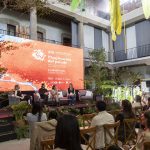Mario Schjetnan and Grupo de Diseño Urbano Receive the Cornelia Hahn Oberlander International Landscape Architecture Prize
Mexican landscape architect Mario Schjetnan and Grupo de Diseño Urbano have received the Cornelia Hahn Oberlander International Landscape Architecture Prize. Read the full announcement for details.
Mario Schjetnan’s core principle: “We have the human right to public open space.”
“We have the human right to public open space.”
The biennial prize includes $100,000 and two years of public, landscape-related activities.
Washington, D.C., October 14, 2025 – The Cultural Landscape Foundation (TCLF) announced today that landscape architect Mario Schjetnan and his Mexico City–based firm Grupo de Diseño Urbano (GDU) are the laureates of the 2025 Cornelia Hahn Oberlander International Landscape Architecture Prize (the Oberlander Prize).
Schjetnan and GDU, a landscape architecture, urbanism, and architecture firm founded in 1977, have worked extensively throughout Mexico, Latin America, the Middle East, and the United States. The Oberlander Prize includes $100,000 and two years of public engagements designed to promote the laureate’s work and landscape architecture more broadly.
Schjetnan will be a featured speaker at the upcoming Oberlander Prize Forum titled “Soak it Up,” to be held in Los Angeles, California, on December 5, 2025.
Schjetnan and GDU were selected by an international jury of seven experts from more than 300 nominations received worldwide. Attributes of the Oberlander Prize laureate include, among others, “exceptionally talented, creative, courageous, and visionary work,” with “an extensive body of built work that exemplifies the art of landscape architecture.”
In the words of the Oberlander Prize jury:
“In an era of the accelerated emergence of megacities and cultural homogenization, Grupo de Diseño Urbano (GDU), founded and led by Mario Schjetnan, is a strong reference point for social commitment and environmental justice in tune with the art of landscape architecture. Their work bridges the ethical and the aesthetic, advocating for access to nature in the city as a fundamental human right.”
“Their work bridges the ethical and the aesthetic, advocating for access to nature in the city as a fundamental human right.” — Oberlander Prize Jury
The jury also stated that “GDU’s built work is tangible evidence and a model that provides public landscapes as essential infrastructure” in rapidly urbanizing environments, where more than half of today’s global population lives.
The Oberlander Prize website includes a biographical profile of the honoree and a 12-minute introductory video about Mario Schjetnan and GDU, as well as three videos on significant projects: Parque Ecológico Xochimilco, Bosque de Chapultepec, and Parque La Mexicana.
Mario Schjetnan and Grupo de Diseño Urbano
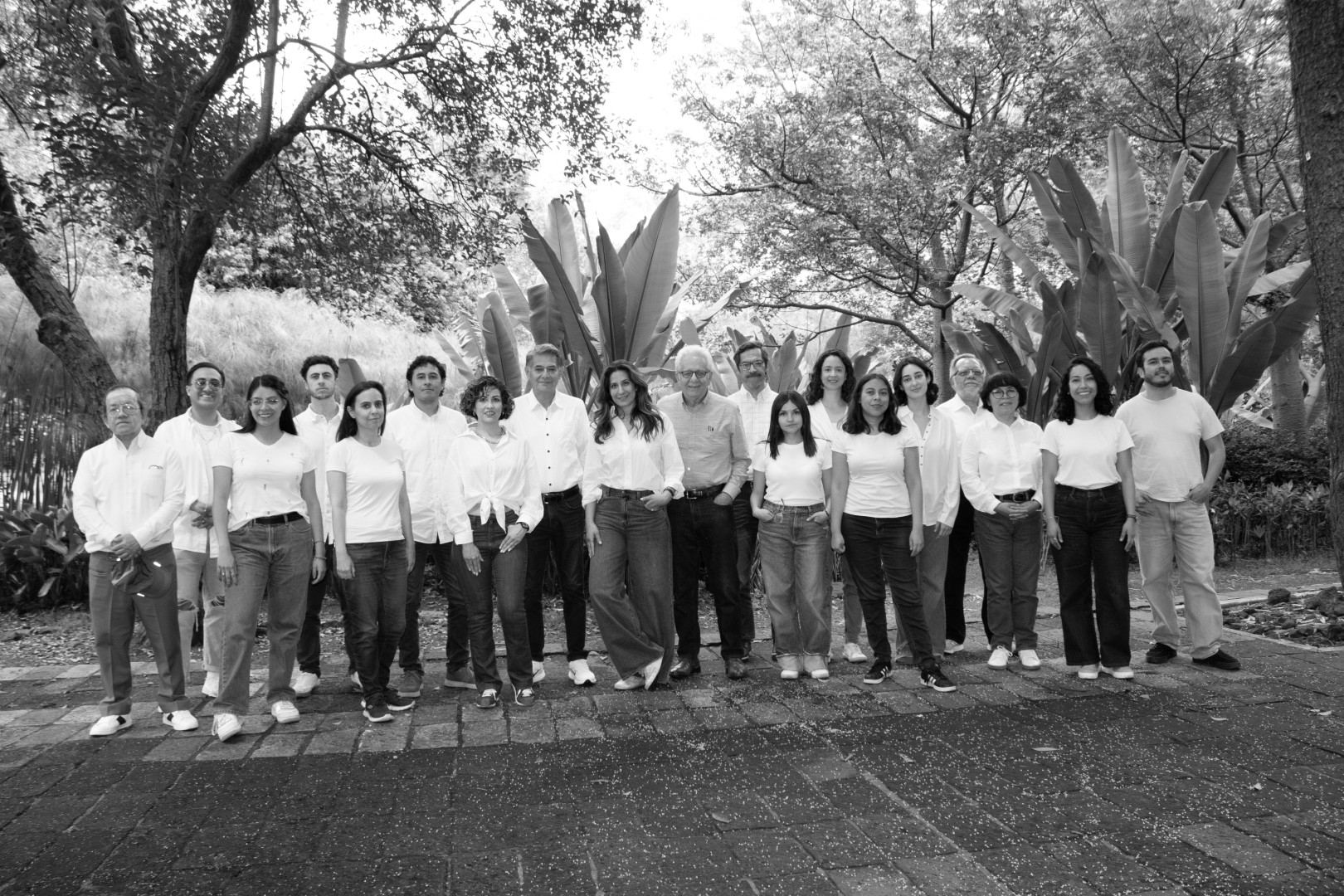
Equipo GDU
Fotografía: Cortesía Grupo de Diseño Urbano
Mario Schjetnan, founder of Grupo de Diseño Urbano (GDU), earned his B.Arch. from the National Autonomous University of Mexico (UNAM) in 1968, an M.L.A. from the University of California, Berkeley, in 1970, and a Loeb Fellowship at Harvard University’s Graduate School of Design in 1984 in advanced environmental studies.
In 1995, the Autonomous University of Nuevo León awarded him an honorary doctorate in Architecture, and in 2025 the Autonomous University of Baja California likewise conferred the same distinction.
Schjetnan is part of a generation of landscape architects, architects, and urban planners who demonstrated the environmental impact of urban development and its consequences for life, the planet, and its inhabitants. He has developed new theories and practices for city design grounded in environmental knowledge and cultural memory, placing quality of life and residents’ well-being at the center of a new ethical and aesthetic relationship with the environment.
Schjetnan’s principal influences include modern-era architects such as Luis Barragán, Max Cetto, Mario Pani, and Augusto Álvarez. In landscape architecture, he cites Luis Barragán, Roberto Burle Marx, and Lawrence Halprin—one reason he studied at Berkeley—along with Mexican artists like Diego Rivera, José Clemente Orozco, Juan O’Gorman, and Carlos Mérida; novelist Carlos Fuentes; poet Octavio Paz; and the rich legacy of pre-Hispanic mythology, architecture, and culture, among others.
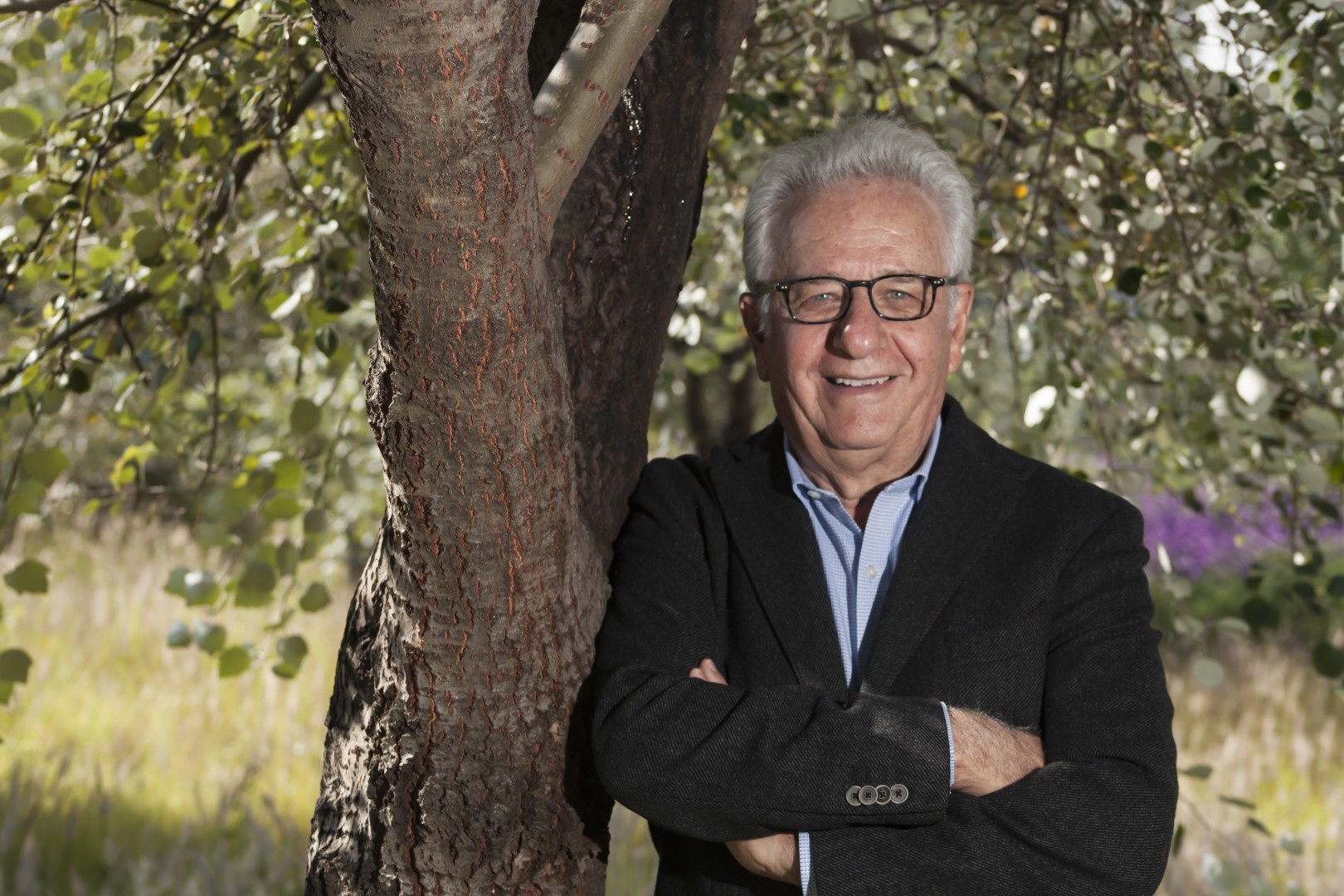
Mario Schjetnan, Fundador de Grupo de Diseño Urbano, Ciudad de México, México
Fotografía: Cortesía de Grupo de Diseño Urbano y la Fundación cultural del paisaje
Before founding GDU, Schjetnan served as the first head of Urban Design and Housing at INFONAVIT (1972–1977), a government initiative created to build housing for workers. It was a transformative experience during which he traveled extensively throughout Mexico and discovered, in his words, “the immense mosaic of cultures of Mexico.” He recently noted:
“For me it was like a post-doctorate on Mexico. We created a series or a set of environmental urban design concepts different from what had been built previously in housing. In five years we built 100,000 houses and housing units, and in Mexico City alone nearly 25,000 were built.”
“For me it was like a post-doctorate on Mexico. We created a series or a set of environmental urban design concepts different from what had been built previously in housing. In five years we built 100,000 houses and housing units, and in Mexico City alone nearly 25,000 were built.”
During his Loeb Fellowship at Harvard, Schjetnan studied the fundamentals of public-private partnerships, a well-established concept in the United States for developing and maintaining civic, urban, and landscape infrastructure. He cites the Chapultepec Park Trust (Fideicomiso Pro-Bosque de Chapultepec) and Parque La Mexicana as public-private partnership models for the maintenance and development of these spaces.
GDU was founded in 1977 by Schjetnan and architect José Luis Pérez as his principal partner, together with their respective spouses, Irma Schjetnan and Letty Pérez. Since then, Schjetnan and GDU have designed and built an extensive body of landscape architecture, urbanism, and architecture projects in Mexico, Latin America, China, the Middle East, and the United States.
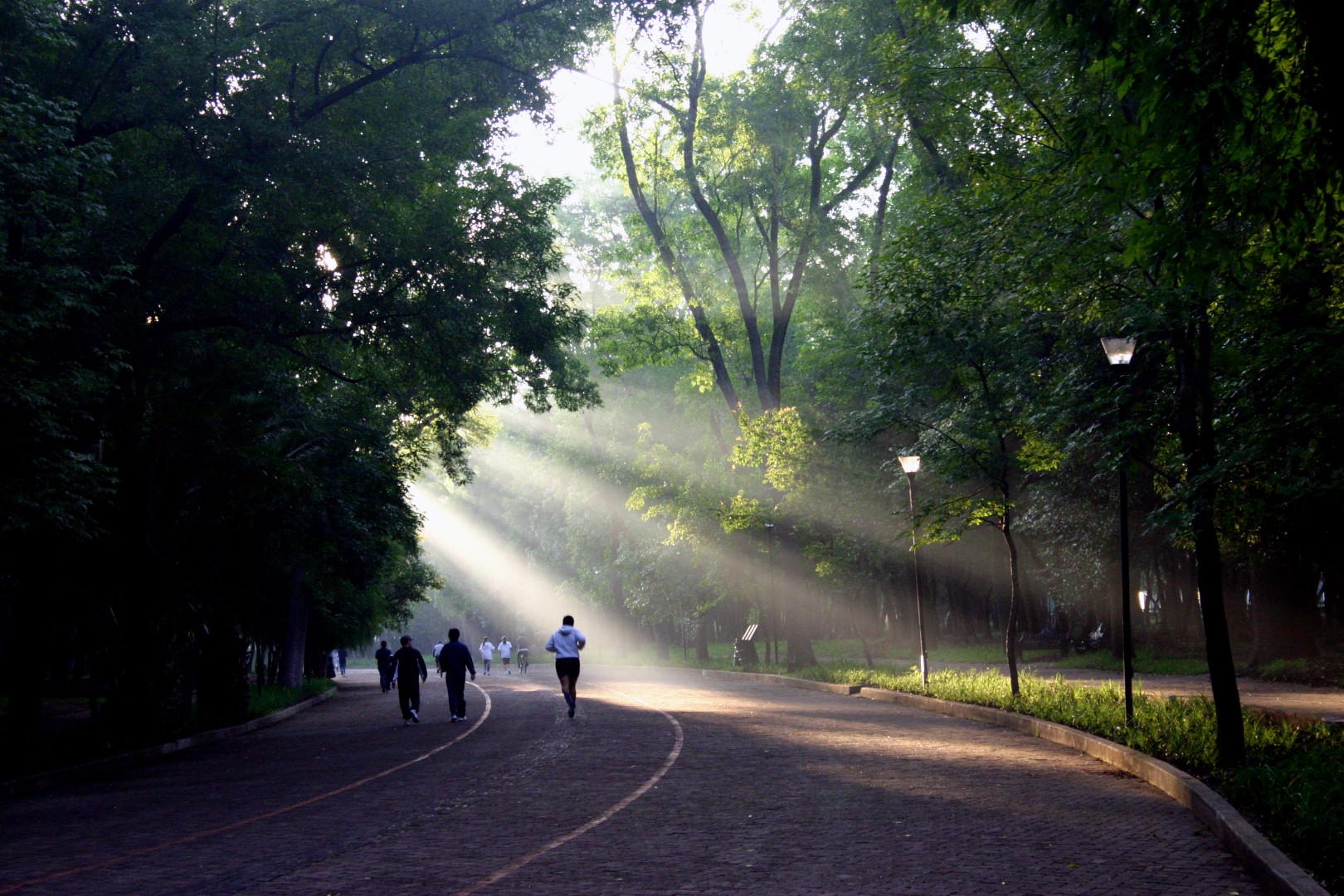
Parque de Chapultepec
Fotografía: Francisco Gomez, cortesía de Grupo de Diseño Urbano y la Fundación cultural del paisaje
GDU’s current portfolio includes residential developments, post-industrial sites, tourism, museums, and other urban public spaces. Schjetnan and GDU’s projects are characterized by sustainable water use, recycling and reuse of post-industrial sites, and the rehabilitation and improvement of public, urban, and natural spaces.
When asked what typifies a GDU landscape work, he responds:
“I think landscape is first and foremost a cultural concept, and secondly our projects are site-specific designs.”
Schjetnan also states:
“If you want to develop a new site or a new urban area, you have to start with a park to generate a sense of place.”
Finally, he notes:
“The main goal of my life is to improve the livability of the poorest areas of Mexico and Latin America by providing social justice and environmental equity.”
He is emphatic that there must be a “human right to open and green public space.”
Mario Schjetnan has taught and led urban and landscape design studios at various institutions:
Universidad de Harvard (1994, 1998, 2005)
Universidad de Arizona, Tucson (1999–2001)
Universidad de California, Berkeley (2001, 2021)
Universidad de Texas, Austin (2006)
Universidad de Virginia (2007, 2023)
In Mexico, he has taught at:
FA-UNAM (1970–1972, 2001)
Universidad Iberoamericana (1979–1981)
ITESO Guadalajara (1981–1982)
Universidad Autónoma de Baja California (1983–1984)
He has also lectured and led design workshops in the United States, Australia, Europe, Latin America, New Zealand, China, Israel, and South Africa.
He is a member of the Mexican Academy of Arts, an emeritus member of the National Academy of Architecture, a Fellow of ASLA, and a founding member of SAPM since 1975.
Current GDU Team Members
Mario Schjetnan (Founding Partner and Director), Ana Schjetnan (Partner and General Manager), Manuel Peniche (Senior Associate), Marco A. González (Senior Associate), Carlos Rascón (Associate), José Luis Gómez Hidalgo, Héctor González, María de Jesús Tapia, Jimena Camacho, Estefanía Reyes, Brenda Arellano, Fernanda García, Carmen Rodríguez, Ana Campos, Andrea Ramírez, Fernanda Gómez, Ulises Victores, Mayeli Rojas, Angélica Cardenas, Rubén Gómez, Alejandro Cuevas, Gustavo Rojas (External Associate), Rodrigo Hernández (External Associate), Daniel Ramírez (External Associate), Fabián Tron (External Associate), and Ingrid Schjetnan (External Associate).
Significant GDU Projects in Mexico
Parque Ecológico Xochimilco
From 1990 to 1993, GDU created a 277-hectare park with a 1,400-stall Plant and Flower Market, conceptualizing the intersections of recreation, natural preservation, and passive spaces within the cultural landscape of the chinampas—a UNESCO World Heritage Site noted for its lagoons and ancient agricultural system of artificial islands. GDU restored this cultural landscape while designing a complex hydrological system for navigation, water improvement, stormwater management, and a bird sanctuary. The park was rehabilitated and expanded between 2019–2021.
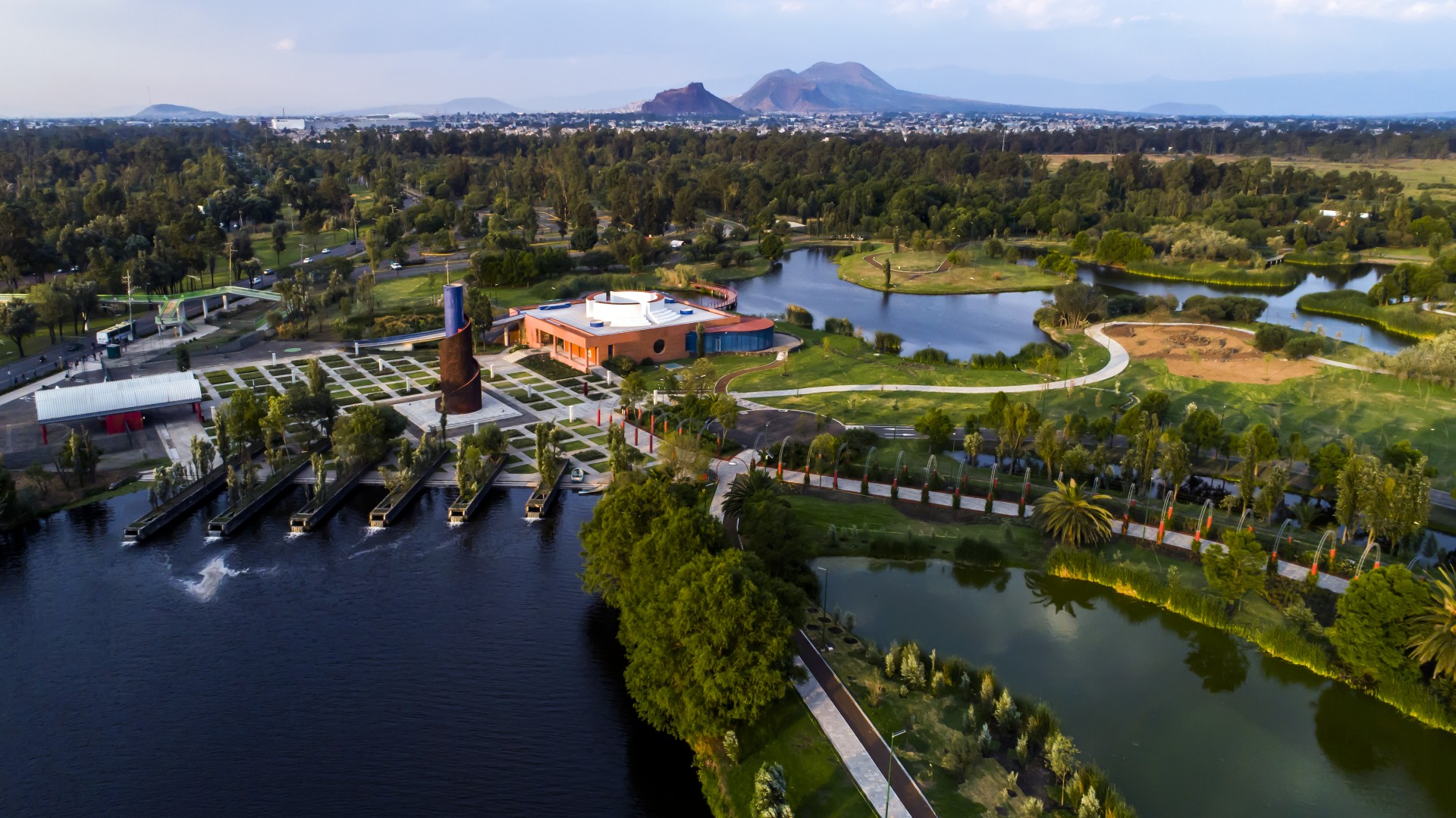
Parque Ecológico Xochimilco
Fotografía: Francisco Gomez Sosa cortesía de Grupo de Diseño Urbano y la Fundación Cultural del paisaje
Bosque de Chapultepec
The oldest park in the Americas and, at 866 hectares, the second-largest urban park in Latin America and Mexico’s central park. Over a 20-year period, GDU created a Master Plan and a 6-hectare Botanical Garden, oversaw the creation and rehabilitation of broad avenues and promenades, managed the pruning, planting, and removal of thousands of trees, rehabilitated historic entrances, lighting, and hydraulic infrastructure, and introduced new wayfinding and visitor amenities.
Parque La Mexicana
In the Santa Fe district within Mexico City’s perimeter, this former gravel and sand mine was excavated in the city’s western hills and closed after the 1985 earthquake. Through a public-private partnership, 70% of the 40 hectares were developed as a public park and 30% for residential developments, infrastructure, and roadways.
A promenade traverses the site and culminates at an amphitheater by a lake. Numerous amenities, all connected by the promenade, include a dog park and a skatepark. Along the southwest edge, a skating park, sports courts, and natural preservation areas were designed over a partially underground shopping center. La Mexicana has quickly become Mexico City’s most visited contemporary public park.
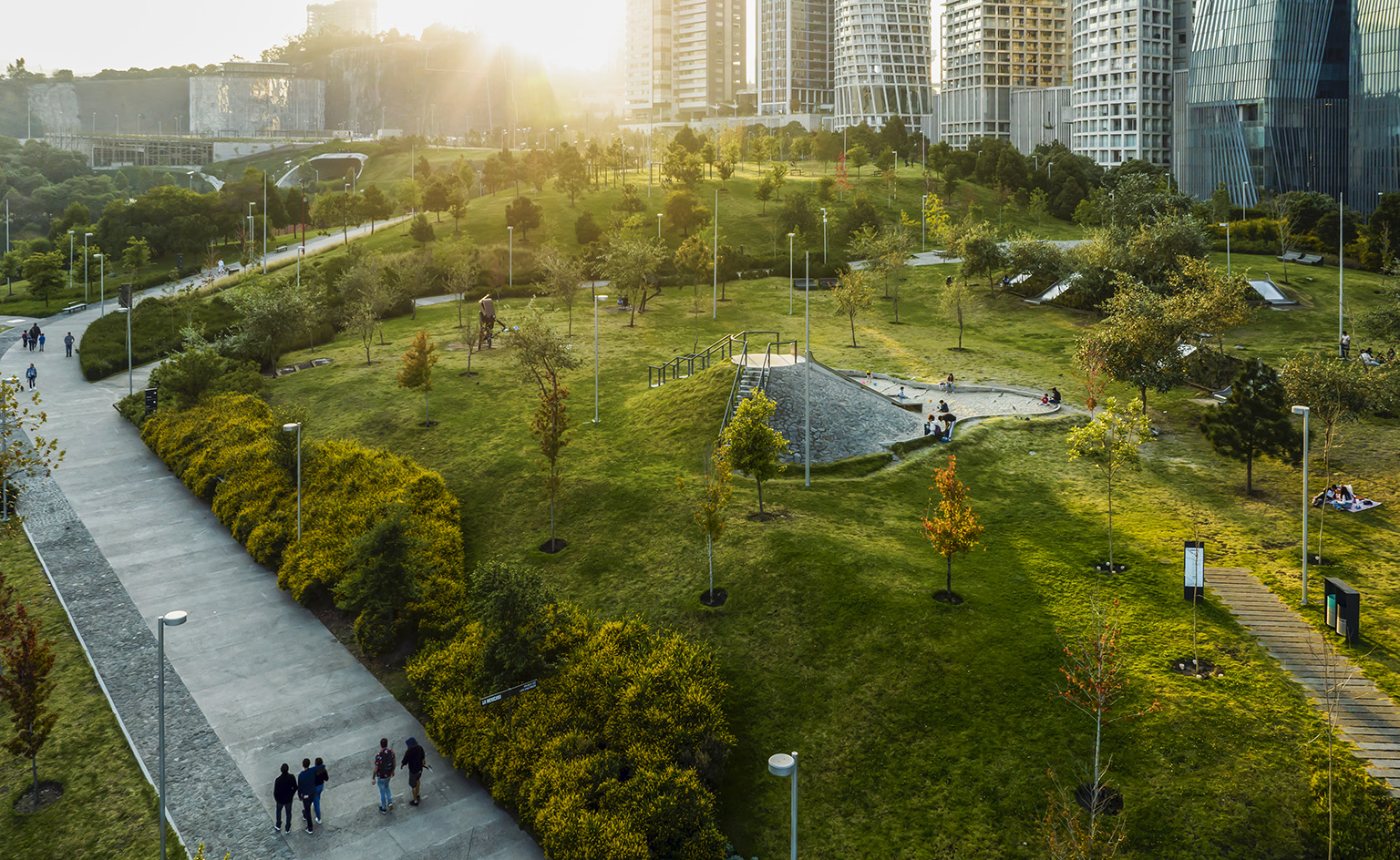
Parque La Mexicana
Fotografía: Francisco Gomez Sosa cortesía de Grupo de Diseño Urbano y la Fundación Cultural del paisaje
Parque Bicentenario / Jardín Natura
Occupying an 8-hectare section within the 55-hectare park in the Azcapotzalco borough, this botanical garden was designed to reverse hydrological and geological damage caused by the former PEMEX refinery. Schjetnan’s design comprises a series of nine biomes, both indoors and outdoors, representing Mexico’s diverse ecosystems—including deserts, tropical forests, and wetlands—linked by a network of pedestrian paths branching from the main walkway.
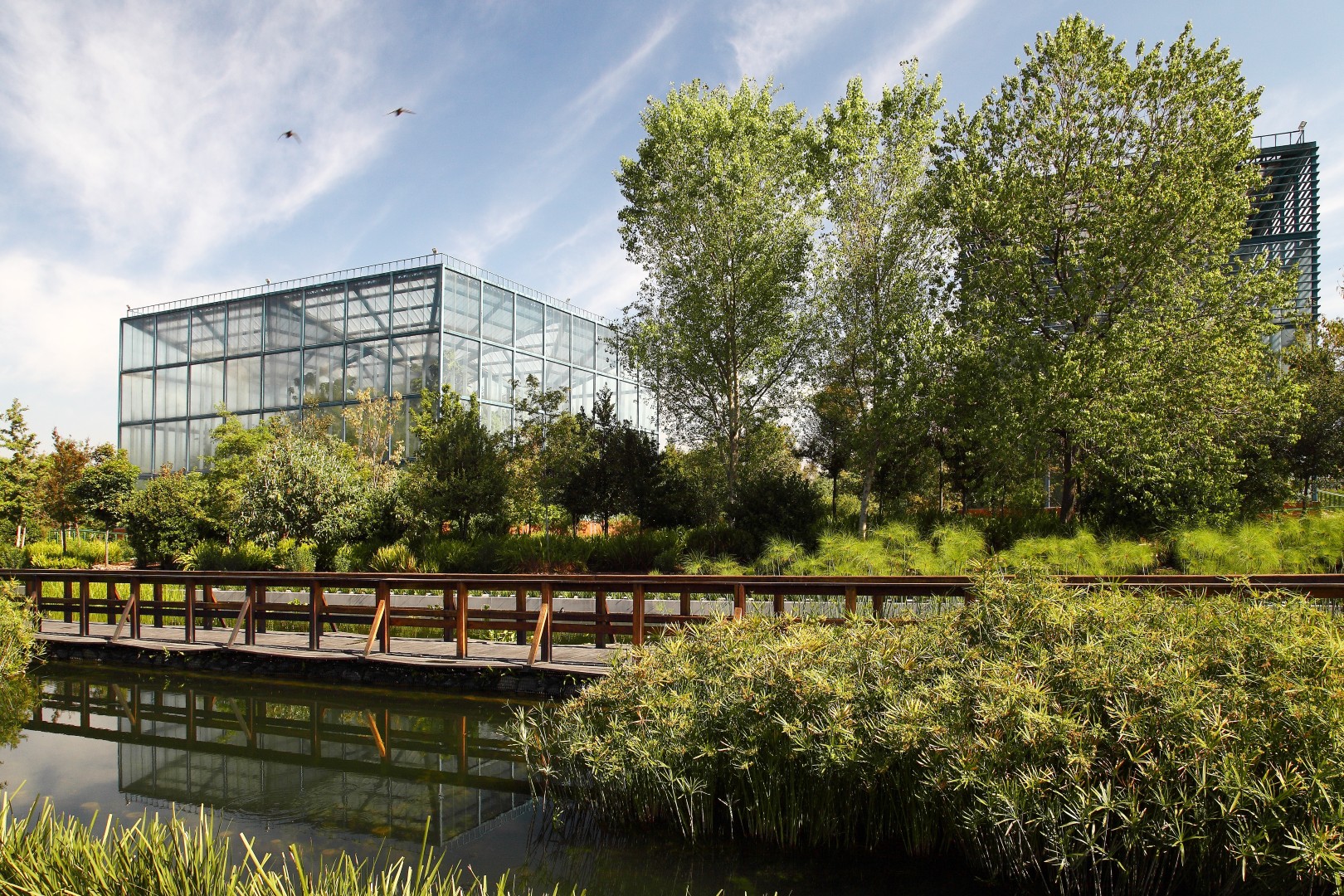
Parque Bicentenario / Jardín Natura
Fotografía: Francisco Gomez Sosa cortesía de Grupo de Diseño Urbano y la Fundación Cultural del paisaje
Museo de las Culturas del Norte, Paquimé – Casas Grandes, Chihuahua, México
GDU was responsible for both the building and the landscape for this “topographic” museum dedicated to the most important pre-Columbian archaeological site in northern Mexico, dating to around 700 CE. Influenced by the existing archaeology—especially the kivas—the museum is organized around a circular, stone-clad central courtyard, with a stepped water channel animating the space and flowing into an angular pond. Paquimé was inscribed as a World Heritage Site in 1998.
Canal de la Cortadura – Tampico, Tamaulipas, México
Connecting Laguna del Carpintero with the Pánuco River, which empties into the Gulf of Mexico, this 1.5-km linear park covers roughly 6.6 hectares. Located near Tampico’s historic center, the park was the axis of a four-phase master plan (2004–2017). GDU redesigned the Canal de la Cortadura as river infrastructure and promenade, transforming a marginalized, neglected settlement into a continuous, welcoming waterfront and revitalizing the urban area.
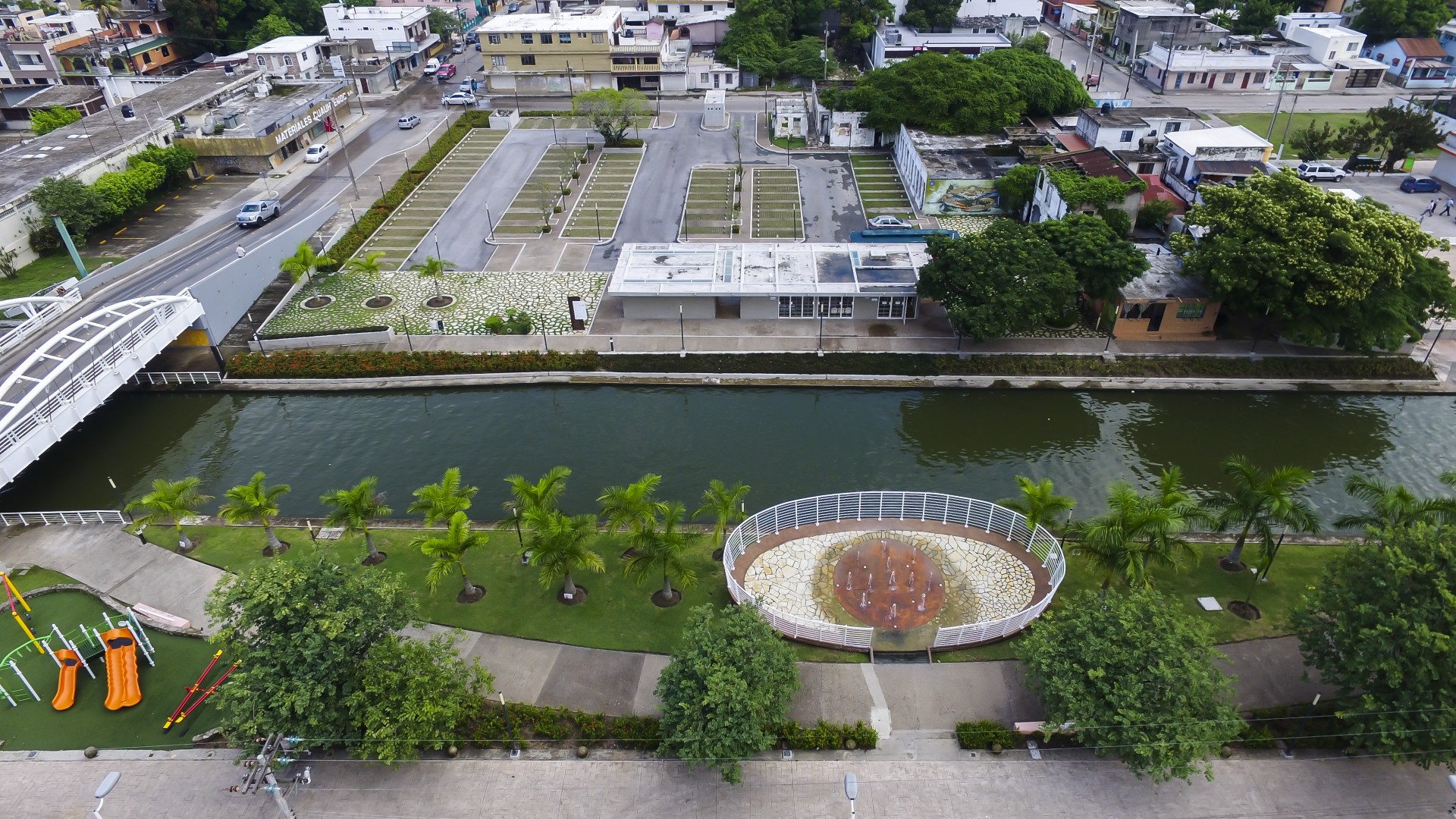
Canal de la cortadura
Fotografía: Francisco Gomez Sosa cortesía de Grupo de Diseño Urbano y la Fundación Cultural del paisaje
Cornerstone Festival of Gardens – Homenaje a los trabajadores inmigrantes – Sonoma, California
This small, 150-m² cultural landscape narrates the story of Mexican and Central American immigrants in the United States, highlighting the difficulties they face and their importance to California’s economy. The garden is divided into three thematic spaces, bounded by walls of varying heights. In one, photographs of the five immigrant workers who helped build the garden hang beside an altar dedicated to Our Lady of Guadalupe and postcards from their hometowns in Michoacán, Mexico.
San Pedro Creek Culture Park – San Antonio, Texas
A concrete drainage channel that once carried stormwater from the city’s historic center was transformed into a linear park that gently meanders south from North Santa Rosa Street to Apache Creek. The limestone-lined channel is flanked by curving paths, tiled benches, and murals by local artists that capture the history and emblematic figures of San Antonio. The route begins at the Plaza de Fundación and symbolizes the birth of water through the “Rain from Heavens” fountain, which flows south forming waterfalls, ponds, irrigation channels, overlooks, seating areas, and lush vegetation.
Declaración de Charles A. Birnbaum
President & CEO, The Cultural Landscape Foundation (TCLF)
“For more than 50 years, Mario Schjetnan’s unwavering commitment to the idea of the human right to access public open spaces—and the need to incorporate cultural values into his work—has been fundamental to shaping and managing a built environment that is equitable and beautiful for all.
For many decades, Schjetnan has held numerous academic positions, and he and GDU have created a diverse and innovative body of projects, proposing new theories and concepts and driving actions to create a more just public realm.”
About the Oberlander Prize
The biennial Cornelia Hahn Oberlander International Landscape Architecture Prize includes $100,000 and two years of public activities and presentations. It was created to increase the visibility, understanding, appreciation, and dialogue around landscape architecture.
The New York Times described Cornelia Hahn Oberlander as the “grand dame of landscape architecture,” noting that she was “among the first to speak passionately about climate change, as well as a pioneer of stormwater management systems and green roofs.”
Creation of the Oberlander Prize began in 2014 amid TCLF’s efforts to prevent demolition of the garden at The Frick Collection, designed by landscape architect Russell Page, on East 70th Street in New York City. According to Birnbaum, “an initial $1 million gift” from Joan Shafran and her husband Rob Haimes turned a dream into a possibility. Additional financial support from other donors and strategic advice from experts helped bring the project to fruition.
The first laureate, Julie Bargmann, was announced on October 14, 2021; the second laureate, Kongjian Yu, on October 17, 2023.
As an Oberlander Prize laureate, the most representative works of Schjetnan and GDU will be added to TCLF’s What’s Out There® database, which currently includes more than 2,700 sites, 15,000 images, and 1,200 designer profiles. Their work and design philosophy will also inspire curatorial programming beginning in 2026.
Oberlander Prize Jury
The seven-member jury includes leading landscape architects, urbanists, architects, academics, and other experts from around the world:
-
Claire Agre – Jury Chair; Partner and Co-Founder, Unknown Studio Landscape Architecture & Urban Design, Baltimore, USA
-
Arthur Adeya – Co-Founder, Kounkuey Design Initiative (KDI); Treasurer, KDI Kenya Board, Nairobi
-
Kirsten Bauer – Global Design Director, ASPECT Studios, Melbourne, Australia
-
Ellen Braae – Professor of Landscape Architecture and Urbanism, University of Copenhagen, Denmark
-
Margarita Jover – Professor of Architecture, Tulane University, New Orleans; Co-Director, Dual Master’s in Landscape Architecture and Engineering; Co-Founder, Aldayjover, Barcelona, Spain
-
Sameep Padora – Architect and writer; Founder of his eponymous practice, Mumbai, India
-
Dorothy Tang, Ph.D. – Landscape Architect; Associate Professor, National University of Singapore
Elizabeth Mossop, the Oberlander Prize Curator, is Dean of the School of Design, Architecture and Building at the University of Technology Sydney (UTS), Australia.
About The Cultural Landscape Foundation (TCLF)
Founded in 1998, TCLF is a 501(c)(3) nonprofit dedicated to connecting people to places. TCLF educates and engages the public to make our shared landscape heritage more visible, identify its value, and empower its stewards and guides. Through its website, publications, lectures, and events, TCLF expands support for and understanding of cultural landscapes. TCLF also administers the Cornelia Hahn Oberlander International Landscape Architecture Prize.






